Like a painter’s palette bursting with edible colors, your garden can become a culinary canvas filled with beautiful, tasty flowers. You’ll discover how common blooms like pansies and violets aren’t just pretty faces but pack surprising flavors, from peppery kicks to subtle sweetness. Whether you’re planning a kitchen garden or looking to elevate your plating game, these fifteen edible flowers offer both visual appeal and distinctive tastes that’ll transform ordinary dishes into memorable experiences.
Contents
1. Pansies
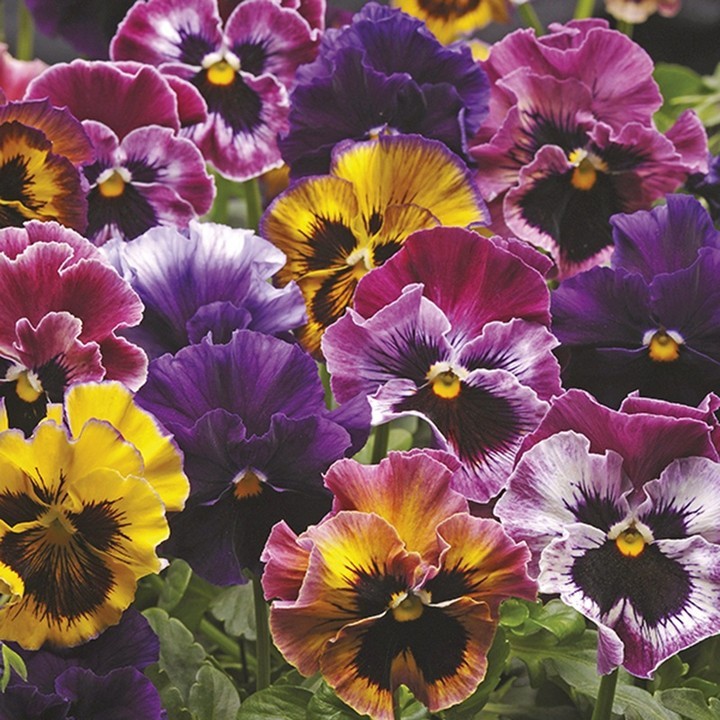
Pansies (Viola x wittrockiana) produce delicate, edible blooms in a stunning array of colors from deep purples and blues to bright yellows and whites. These cheerful flowers have a mild, fresh taste with subtle notes of wintergreen or lettuce, making them popular garnishes for salads, desserts, and cocktails. The entire flower is edible, including the sepals, though most prefer to use just the colorful petals.
- Light: Full sun to partial shade; prefer cooler temperatures and afternoon shade in hot climates
- Water: Keep soil consistently moist but not waterlogged; water when top inch of soil feels dry
- Soil: Rich, well-draining soil with high organic matter content; pH between 5.4 and 5.8
- Temperature: Thrive in cool weather; ideal growing temperatures between 40-65°F
- Spacing: Plant 6-8 inches apart
- Fertilizer: Light feeder; apply balanced, water-soluble fertilizer monthly during growing season
- Season: Best planted in early spring or fall for extended blooming periods
2. Borage
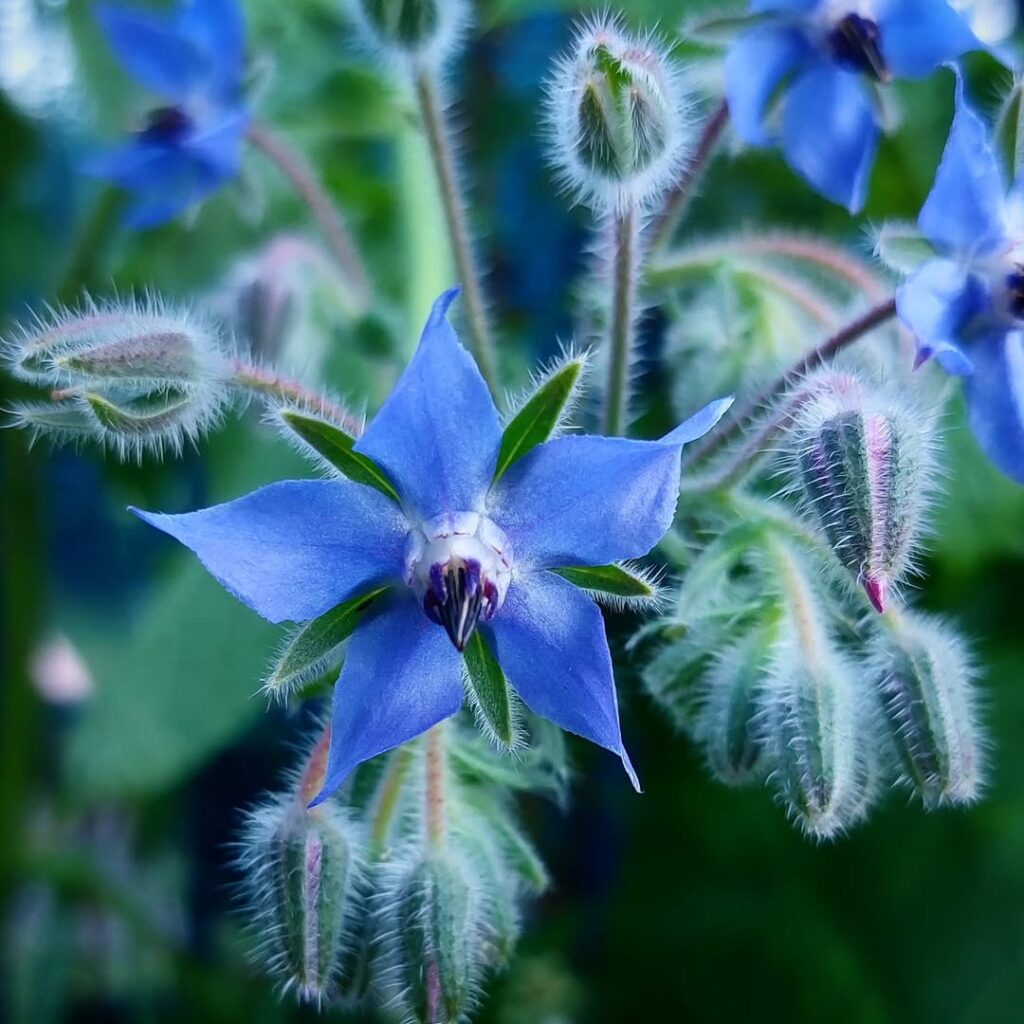
Borage blossoms are delicate, star-shaped flowers with a vibrant blue hue that offer a mild, cucumber-like flavor with subtle sweet notes. These edible flowers bloom throughout the summer season and make beautiful garnishes for salads, cocktails, and desserts. The flowers can be eaten fresh, candied, or frozen in ice cubes, while their leaves are also edible though slightly fuzzy in texture.
- Light: Full sun to partial shade; at least 6 hours of direct sunlight daily
- Soil: Well-draining, fertile soil with pH 6.0-7.0
- Water: Regular watering to maintain consistently moist soil; drought tolerant once established
- Temperature: Thrives in temperatures between 60-70°F (15-21°C)
- Spacing: Plant 12-18 inches apart
- Season: Annual that self-seeds readily
- Fertilizer: Light feeder; minimal fertilization needed
- Companion planting: Grows well with strawberries, tomatoes, and squash
3. Nasturtium
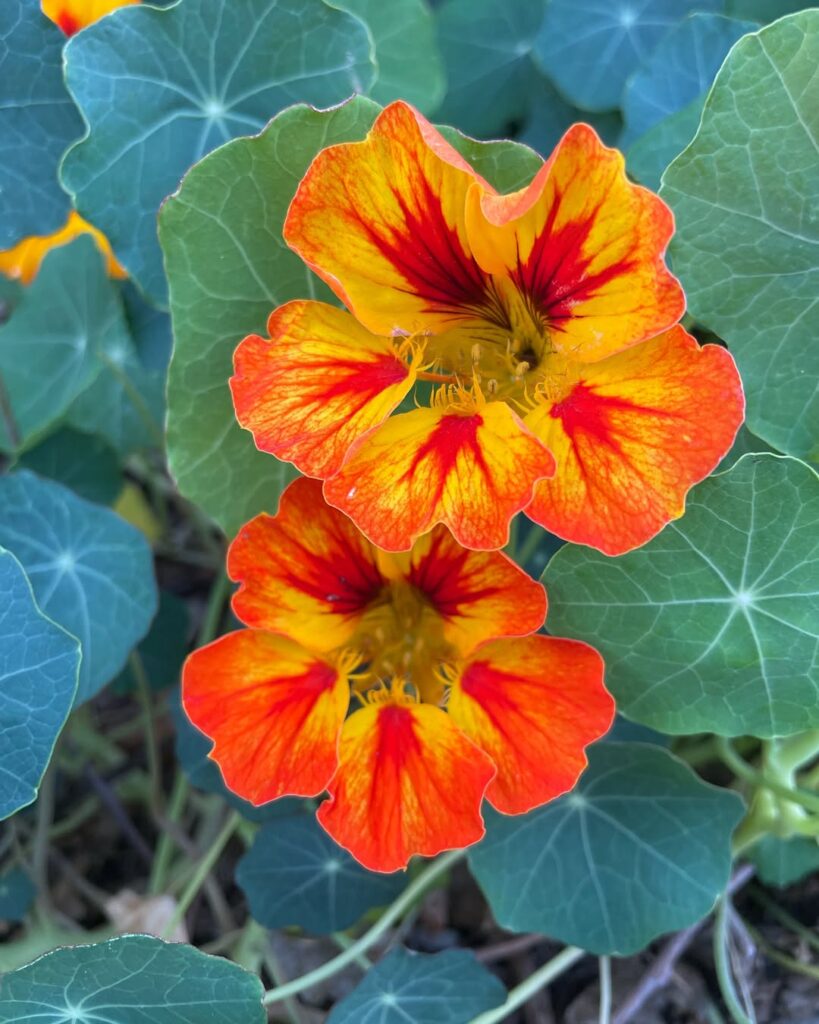
Nasturtiums are vibrant, edible flowers that come in warm shades of yellow, orange, and red, offering a peppery, watercress-like flavor to dishes. Both the flowers and leaves are completely edible and make colorful additions to salads, garnishes, and even as cake decorations. These easy-to-grow annuals produce abundant blooms throughout the growing season and are known for their distinctive round leaves and spurred flowers.
- Light: Full sun to partial shade; at least 6 hours of direct sunlight daily
- Water: Regular watering but avoid overwatering; soil should be well-draining
- Soil: Poor to average soil; too rich soil produces more leaves than flowers
- pH: 6.1-7.8
- Temperature: 55-65°F (13-18°C)
- Spacing: 10-12 inches between plants
- Planting Time: After last frost in spring
- Depth: Plant seeds 1 inch deep
4. Violets
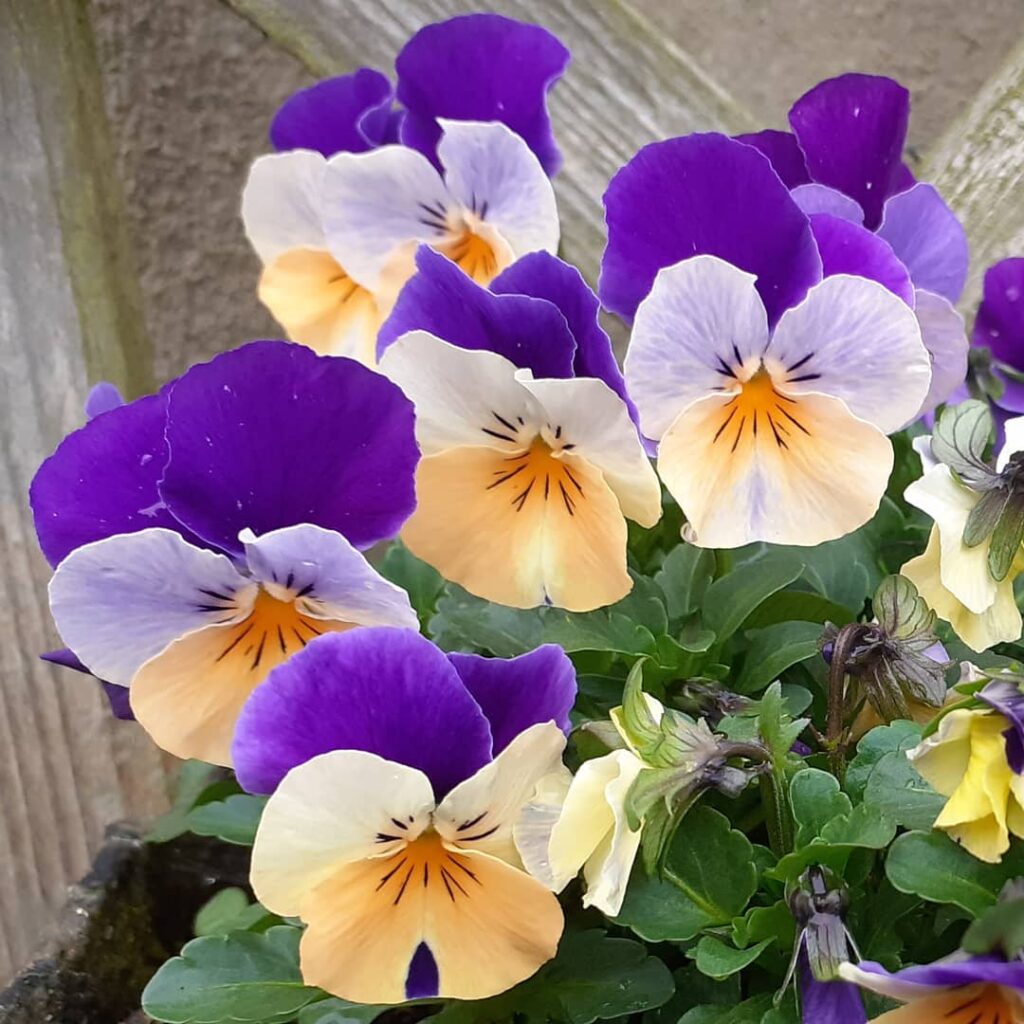
Violets add a charming splash of purple to green salads while contributing a subtle, sweet flavor similar to wintergreen. These dainty flowers can be used fresh or crystallized with sugar as an elegant garnish for desserts. Both the flowers and heart-shaped leaves are edible, offering a mild, pleasant taste that complements lighter dishes. Their petite size makes them perfect for sprinkling atop composed salads without overwhelming other ingredients.
- Light: Partial to full shade, especially in warmer climates
- Water: Keep soil consistently moist but not waterlogged
- Soil: Rich, well-draining organic soil with pH 5.5-6.5
- Temperature: Cool weather plant, thrives in 40-65°F
- Spacing: 4-6 inches between plants
- Planting Depth: Surface sow seeds or plant divisions 1/4 inch deep
- Growing Zone: USDA zones 3-9
5. Marigolds
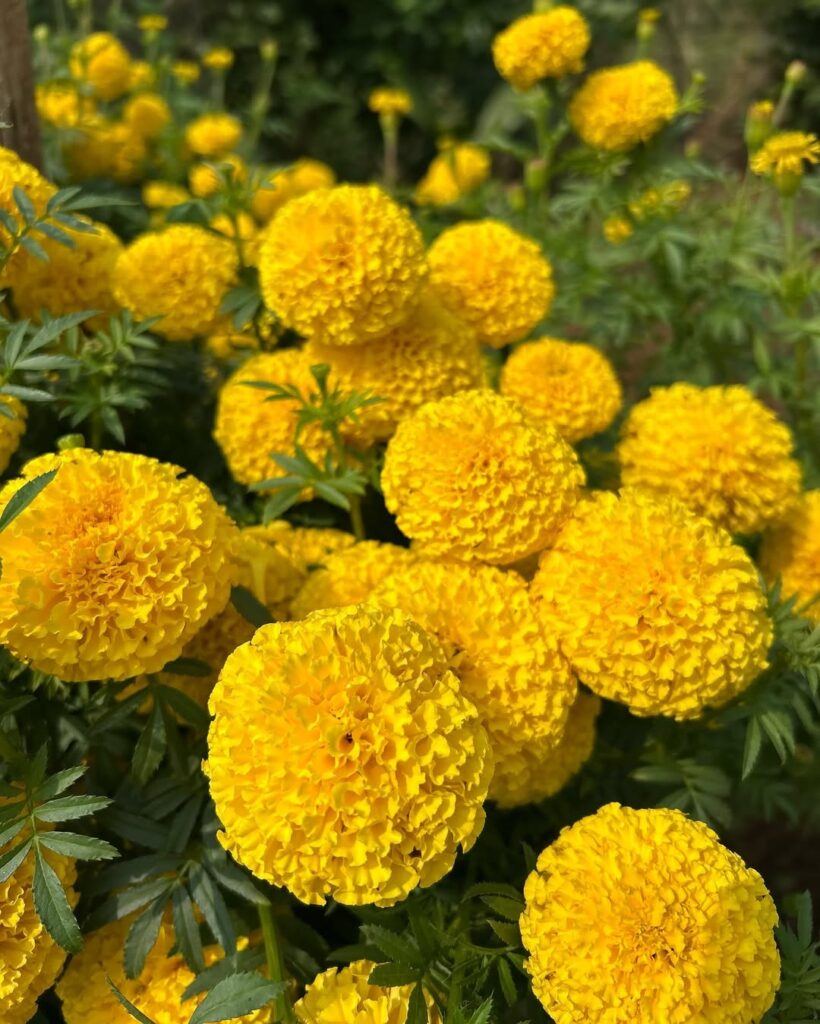
Marigolds provide both vibrant color and a peppery, citrus-like flavor to dishes. These edible flowers range from golden yellow to deep orange, making them perfect for garnishing salads, soups, and desserts. The petals can be dried and used as a saffron substitute, adding a subtle spicy note and natural yellow coloring to rice dishes and baked goods. Both French and African marigold varieties are edible, though French marigolds tend to have a milder, more palatable taste.
- Light: Full sun, at least 6-8 hours daily
- Water: Moderate watering; soil should be kept moist but not waterlogged
- Soil: Well-draining, moderately fertile soil
- pH: 6.0-7.0
- Temperature: 70-75°F (21-24°C)
- Spacing: 6-12 inches apart
- Planting Time: Spring, after last frost
- Days to Maturity: 50-60 days
6. Fragrant Lavender Spices Dishes
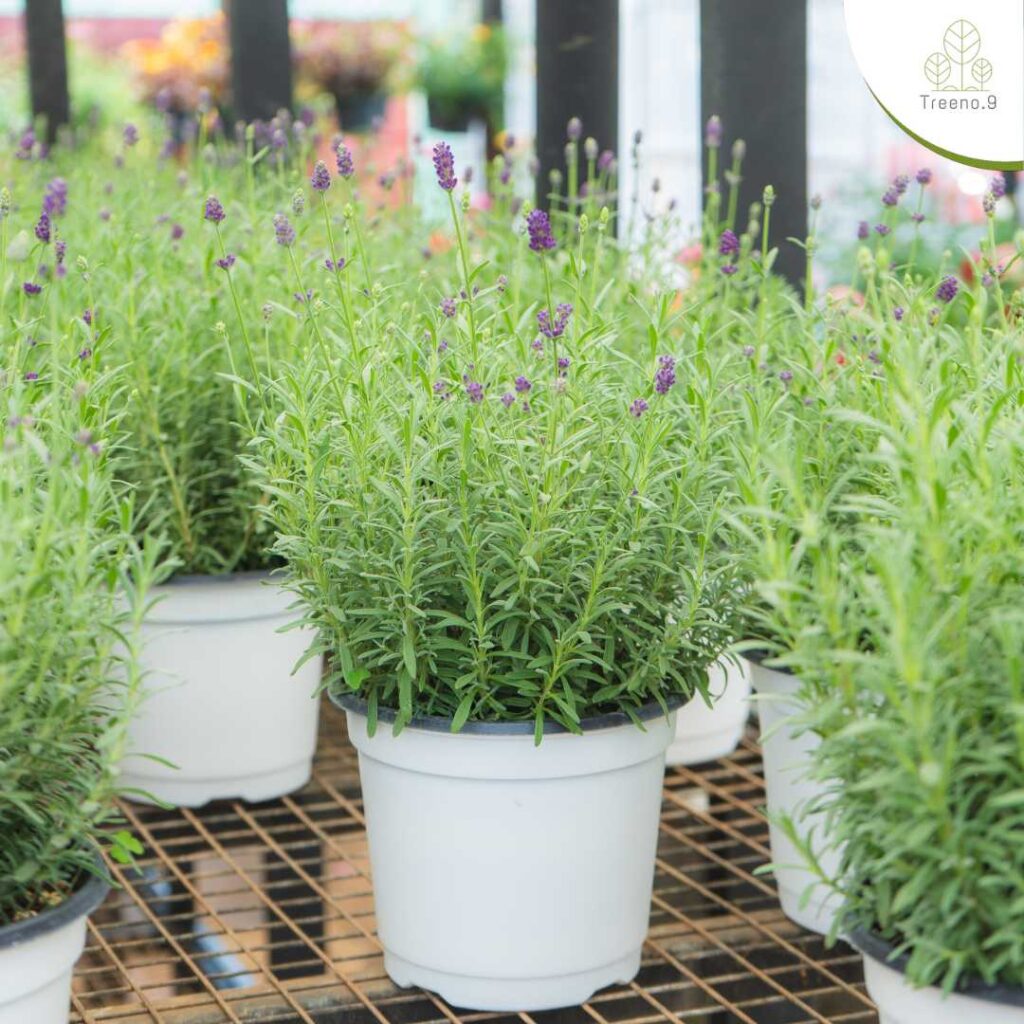
Lavender adds a delicate floral essence to both savory and sweet dishes, with its distinct fragrance enhancing everything from teas and cocktails to baked goods and herb blends. The edible flowers can be used fresh or dried, imparting a slightly sweet, herbal flavor with subtle citrus notes that complement desserts like shortbread cookies, scones, and ice cream, while also working well in marinades and meat rubs. Only culinary lavender varieties should be consumed, with English lavender (Lavandula angustifolia) being the most popular choice for cooking.
- Full sun exposure, minimum 6-8 hours daily
- Well-draining, alkaline soil with pH 6.7-7.3
- Moderate watering, allowing soil to dry between waterings
- Good air circulation to prevent fungal issues
- Sandy or gravelly soil preferred
- Plant in raised beds or mounds to guarantee proper drainage
- Space plants 18-24 inches apart
- Low fertility soil – lavender thrives in poor soil conditions
- Drought tolerant once established
- Winter protection needed in zones 5 and below
7. Chamomile
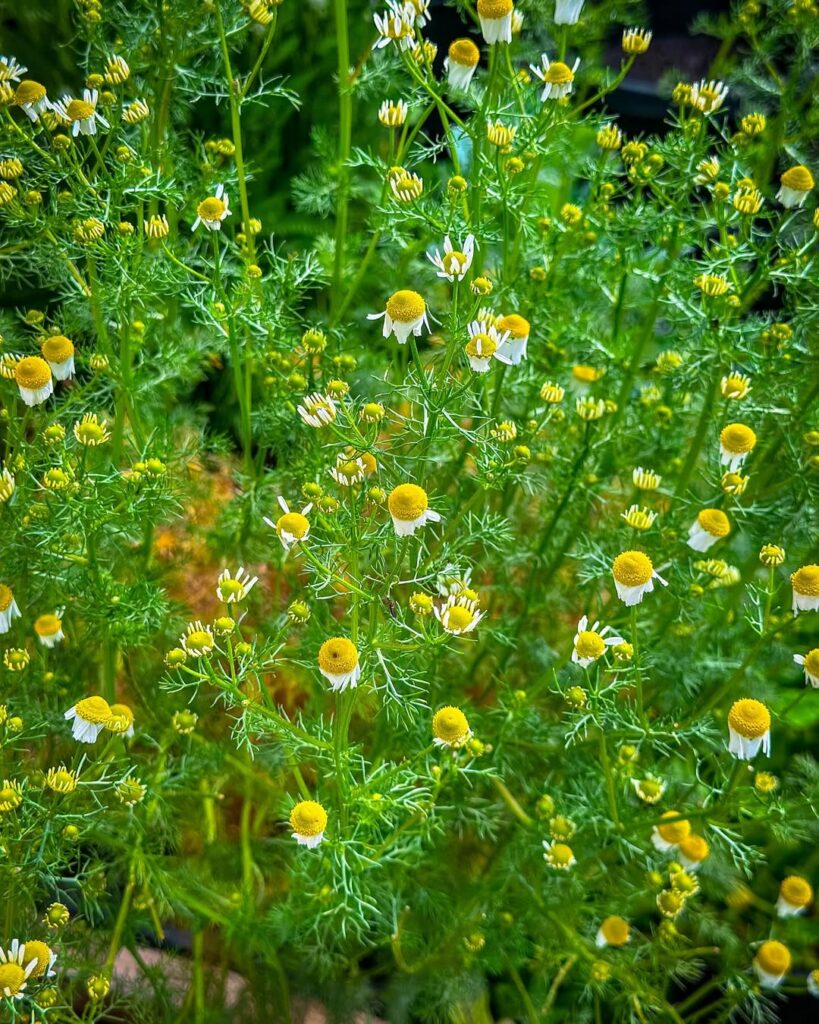
Chamomile produces small, daisy-like flowers with white petals and yellow centers that offer a sweet, apple-like flavor when brewed into tea. Most commonly used as a calming bedtime tea, chamomile flowers can be harvested and dried throughout the growing season, providing a natural remedy for sleeplessness, anxiety, and digestive issues. Both German and Roman varieties are edible, though German chamomile is more commonly grown for tea.
- Light: Full sun to partial shade
- Water: Moderate watering; soil should be kept moist but not waterlogged
- Soil: Well-draining, sandy or loamy soil with pH 5.6-7.5
- Temperature: 60-68°F (15-20°C)
- Spacing: 6-12 inches apart
- Planting Depth: Surface sow seeds, as they need light to germinate
- Height: German chamomile grows 24-36 inches tall; Roman chamomile 3-6 inches
- Harvest: Pick flowers when fully open, preferably in morning after dew has dried
8. Rose Petals Taste Sweet
Rose petals offer a distinctly sweet, floral flavor with subtle notes reminiscent of strawberries and green apples. The taste intensity varies among different rose varieties, with darker colors generally providing stronger flavors. Fresh petals can add both visual appeal and delicate sweetness to salads, desserts, jams, and beverages, while dried petals are commonly used in teas and as garnishes.
- Light: Full sun (6-8 hours daily)
- Soil: Well-draining, rich, loamy soil with pH 6.0-6.5
- Water: Deep watering 1-2 times weekly; avoid wetting foliage
- Temperature: 60-70°F (15-21°C)
- Spacing: 24-36 inches between plants
- Fertilizer: Monthly feeding during growing season with balanced fertilizer
- Pruning: Regular deadheading and annual spring pruning
- Winter Protection: Mulch around base before frost in cold regions
9. Calendula
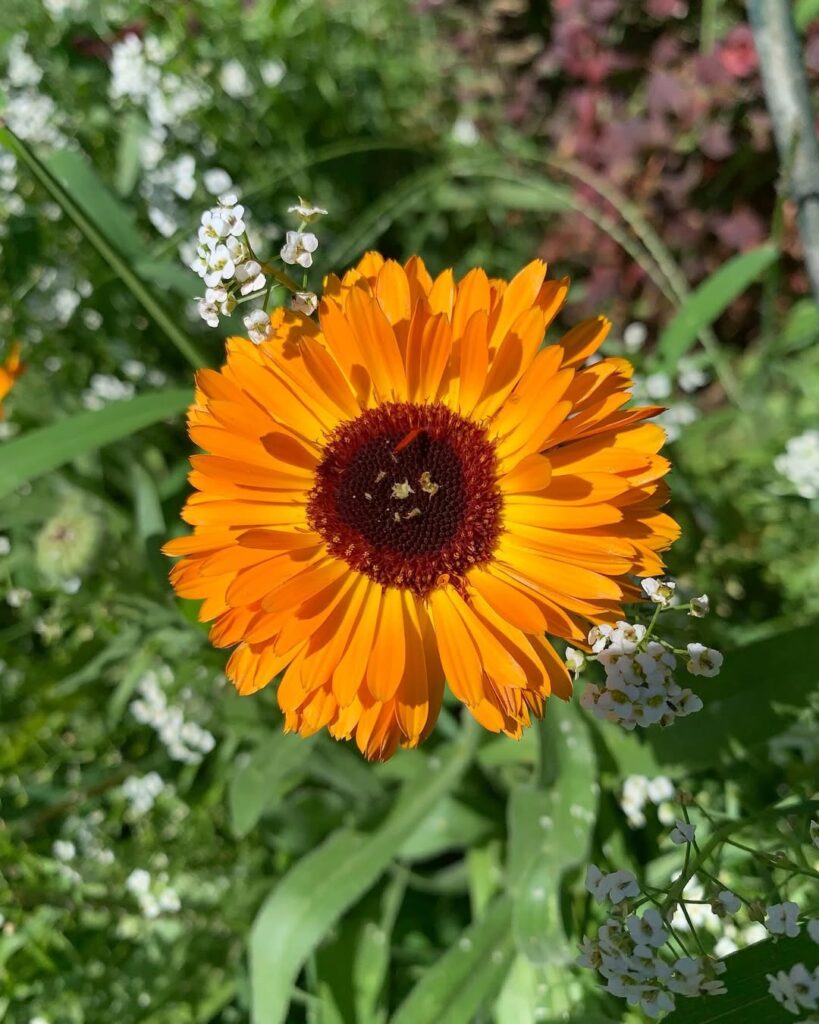
Calendula petals offer a vibrant, peppery bite with subtle notes of saffron, making them a zesty addition to salads, soups, and baked goods. These bright orange and yellow petals not only add a pop of color to dishes but also contain beneficial compounds with anti-inflammatory properties. Often called pot marigolds, calendulas are distinct from ornamental marigolds and have been used for centuries in both culinary and medicinal applications.
- Full sun to partial shade, with at least 6 hours of direct sunlight daily
- Well-draining, moderately fertile soil with pH between 6.0-7.0
- Regular watering to maintain consistently moist soil, but not waterlogged
- Tolerates cool weather and can handle light frost
- Space plants 6-12 inches apart
- Benefits from deadheading to promote continuous blooming
- Grows best in temperatures between 55-75°F (13-24°C)
- Can be directly sown in spring after last frost or started indoors 6-8 weeks before
10. Chive
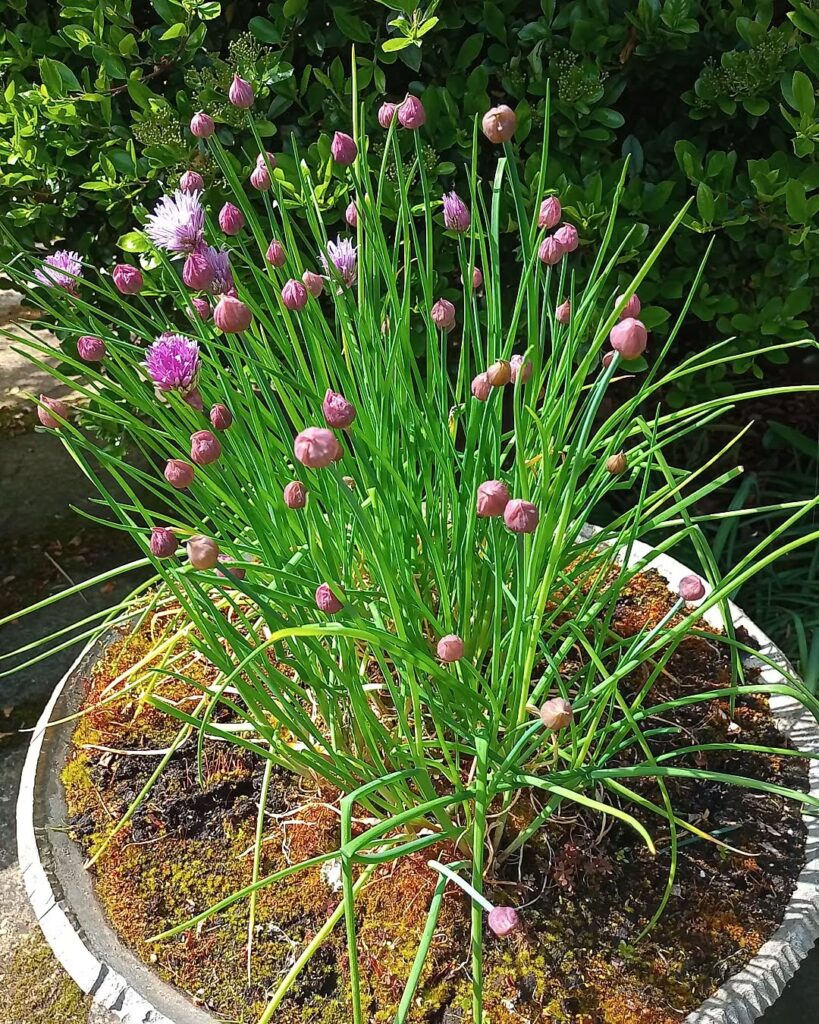
Chive blossoms emerge as delicate purple pom-pom shaped flowers atop hollow, tubular stems in late spring to early summer. These edible blooms carry the same mild onion flavor as their leaves but with a more subtle, refined taste. The flowers can be separated into individual star-shaped florets and sprinkled over salads, soups, or potato dishes, adding both visual appeal and a gentle allium flavor to culinary creations.
- Light: Full sun to partial shade, minimum 6 hours direct sunlight daily
- Water: Consistent moisture, about 1 inch per week; avoid waterlogged soil
- Soil: Well-draining, fertile soil with pH 6.0-7.0
- Temperature: Hardy in zones 3-10; tolerates cold well
- Spacing: 4-6 inches between plants
- Fertilizer: Light feeder; apply balanced fertilizer in spring
- Maintenance: Remove spent blooms to prevent self-seeding
- Companion planting: Grows well with carrots, tomatoes, and brassicas
11. Daylily
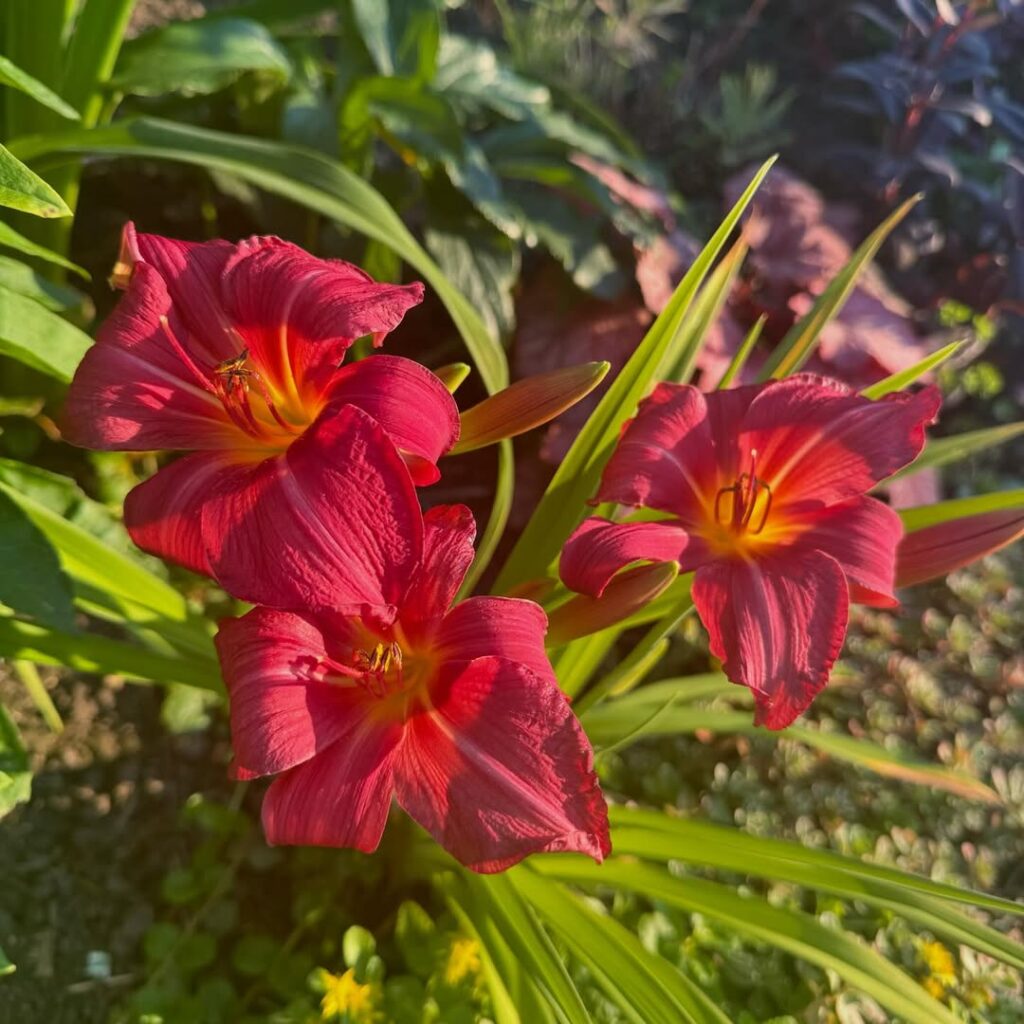
Daylilies (Hemerocallis) produce edible, mildly sweet blooms that taste similar to lettuce or melon. While each flower only lasts one day, a single plant can produce numerous buds throughout the growing season. Both the flower petals and buds are edible and can be eaten raw in salads, stuffed like squash blossoms, or battered and fried. The flowers have a crisp texture and make beautiful garnishes for summer dishes.
- Light: Full sun to partial shade, minimum 6 hours of direct sunlight daily
- Water: Regular watering, about 1 inch per week; drought tolerant once established
- Soil: Well-draining, rich soil with pH between 6.0 and 7.0
- Temperature: Hardy in USDA zones 3-10
- Spacing: 18-24 inches between plants
- Fertilizer: Light feeding in spring with balanced fertilizer
- Maintenance: Remove spent blooms to encourage continued flowering
12. Anise Hyssop
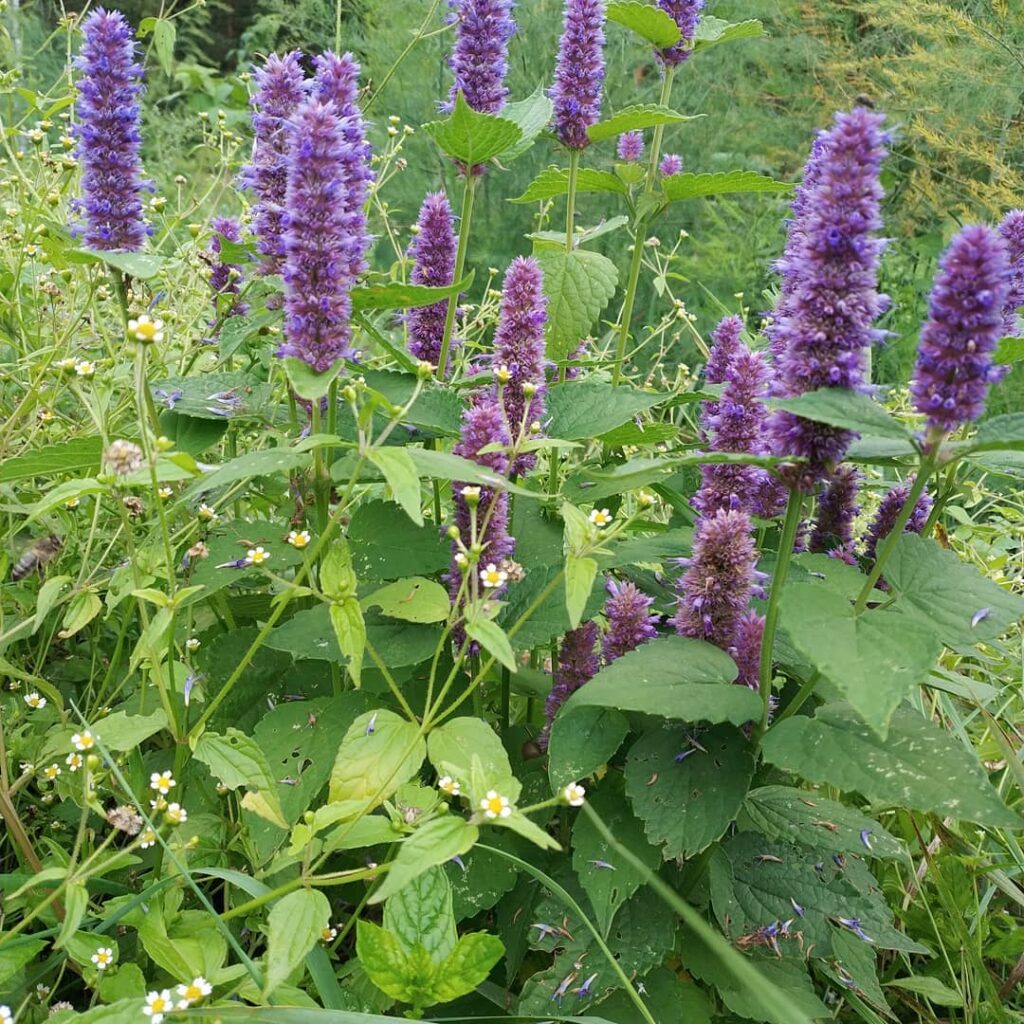
Anise hyssop petals offer a delightful combination of spicy licorice and mint flavors, making them popular additions to both sweet and savory dishes. These delicate purple-blue flowers bloom on tall spikes throughout summer and early fall, providing an attractive garnish for salads, desserts, and beverages while also attracting beneficial pollinators to the garden.
- Light: Full sun to partial shade
- Water: Moderate watering; drought-tolerant once established
- Soil: Well-draining, average to rich soil
- pH: 6.0-7.0
- Spacing: 18-24 inches apart
- Height: 2-4 feet tall
- Temperature: Hardy in zones 4-9
- Maintenance: Deadhead spent blooms to encourage continued flowering
- Companion planting: Grows well with vegetables and other herbs
13. Johnny-Jump-Ups
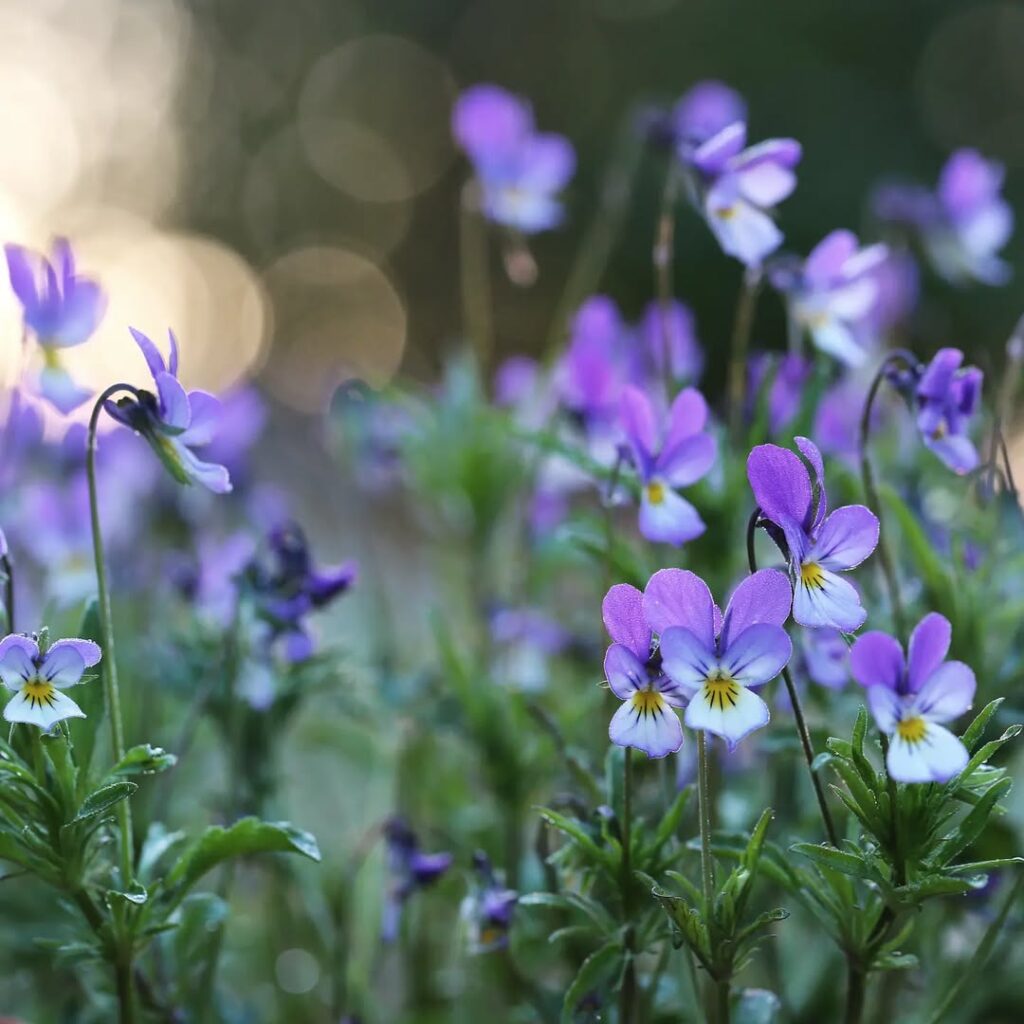
Johnny-Jump-Ups (Viola tricolor) are charming, small edible flowers featuring delicate purple, yellow, and white petals that create a face-like appearance. These dainty blooms have a mild, sweet flavor with subtle notes of wintergreen, making them perfect for decorating desserts, adding to salads, or crystallizing for cake decorations. The flowers bloom prolifically from spring through fall and will often self-seed, creating naturalized patches in the garden.
- Light: Partial to full sun; afternoon shade in hot climates
- Water: Regular watering to maintain consistently moist soil; do not let dry out completely
- Soil: Rich, well-draining soil with high organic matter content
- pH: 6.0-7.0
- Temperature: Cool weather plant; prefers 40-70°F
- Spacing: 4-6 inches apart
- Fertilizer: Light feeding with balanced fertilizer in spring
- Height: 4-8 inches tall
- Planting Time: Early spring or fall
- Zone: USDA zones 3-9
14. Carnations
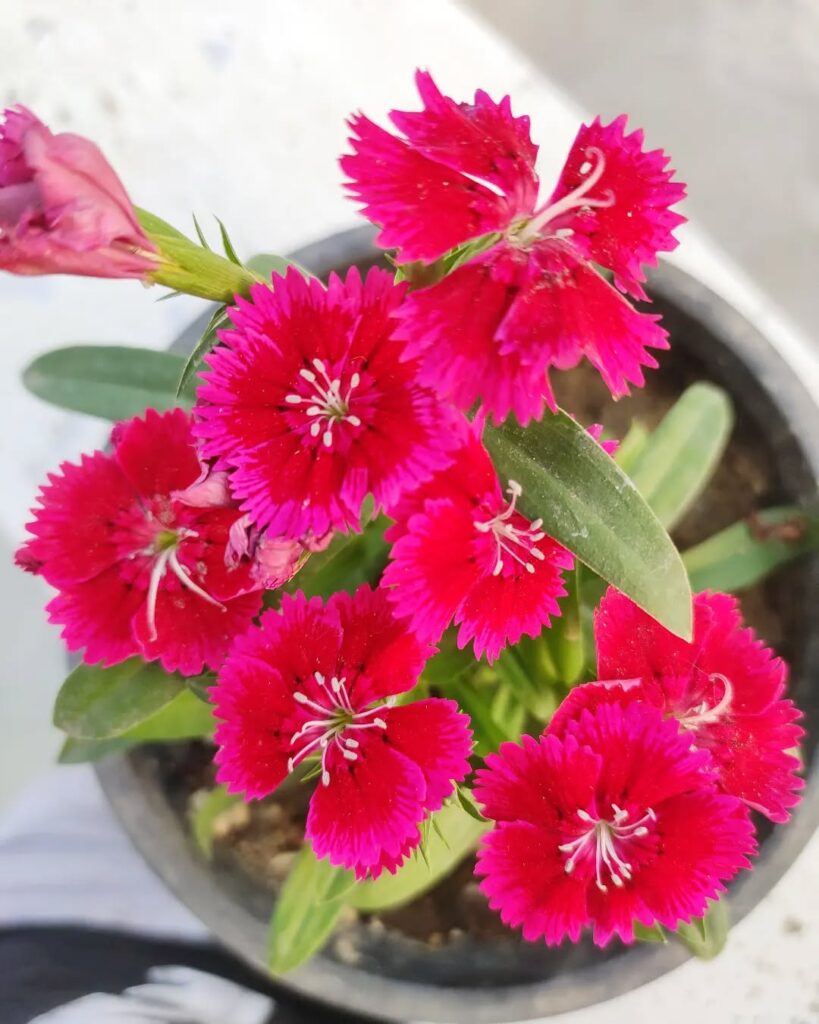
Carnations (Dianthus caryophyllus) offer an unexpected peppery-sweet flavor profile that can enhance both sweet and savory dishes. Their delicate petals can be used fresh as colorful garnishes on salads and desserts, crystallized for cake decorations, or infused into syrups and beverages. The petals have a clove-like taste with subtle notes of nutmeg, making them particularly suitable for incorporation into spiced baked goods and aromatic dishes.
- Light: Full sun (6-8 hours daily)
- Soil: Well-draining, alkaline soil with pH 6.7-7.5
- Water: Moderate watering; soil should be kept consistently moist but not waterlogged
- Temperature: 50-70°F (10-21°C)
- Spacing: 12 inches between plants
- Fertilizer: Light feeder; apply balanced fertilizer monthly during growing season
- Hardiness: Zones 6-9
- Planting Time: Spring after last frost or fall in warmer climates
15. Empress of India
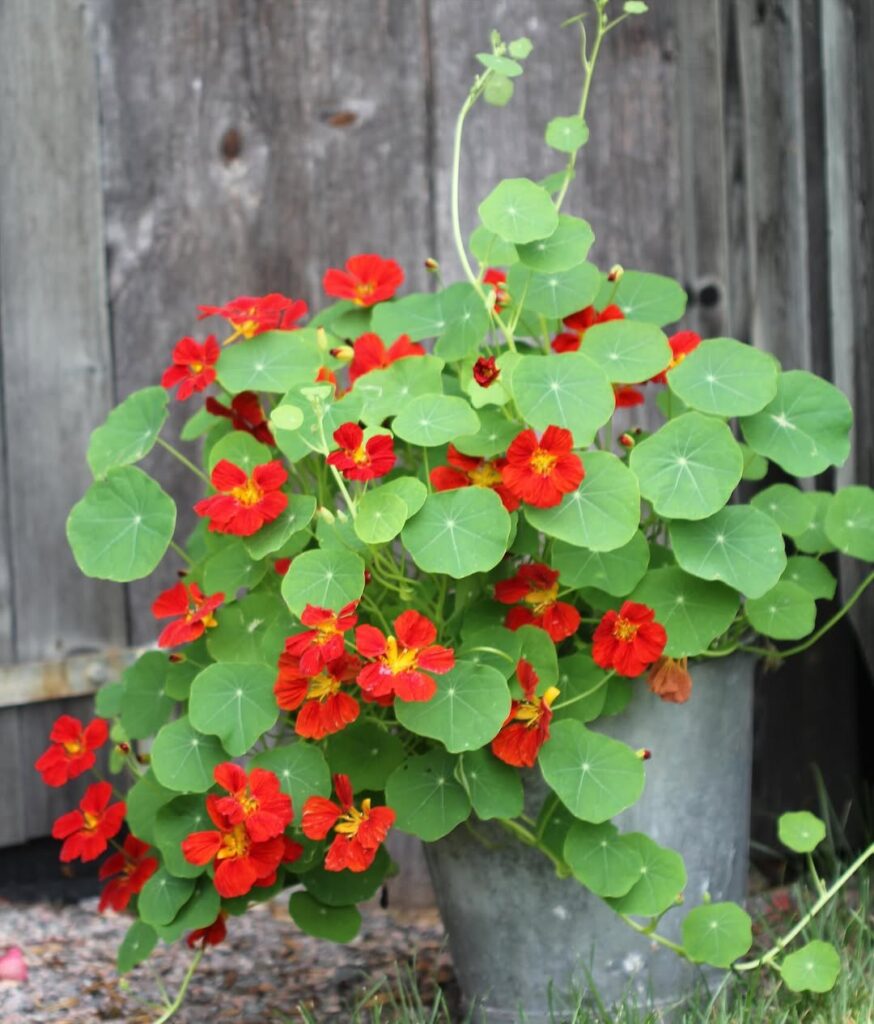
Empress of India flowers (Tropaeolum majus) are vibrant, deep red-orange nasturtium blossoms with a peppery, slightly sweet flavor. The flowers grow on compact plants with distinctive bluish-green foliage, making them both ornamental and edible additions to gardens. These edible blooms can be used fresh in salads, as garnishes, or crystallized for decorating desserts, while their leaves are also edible and offer a similar pungent taste.
- Light: Full sun to partial shade, with best flowering in full sun
- Water: Regular watering to keep soil moist but not waterlogged; drought tolerant once established
- Soil: Well-draining, poor to average soil; too rich soil promotes foliage growth over flowers
- Temperature: Prefers cool weather; grows best between 55-65°F (13-18°C)
- Spacing: Plant seeds 10-12 inches apart
- Growing Season: Spring through fall
- Height: Grows 12-14 inches tall
- pH: 6.1-7.8
